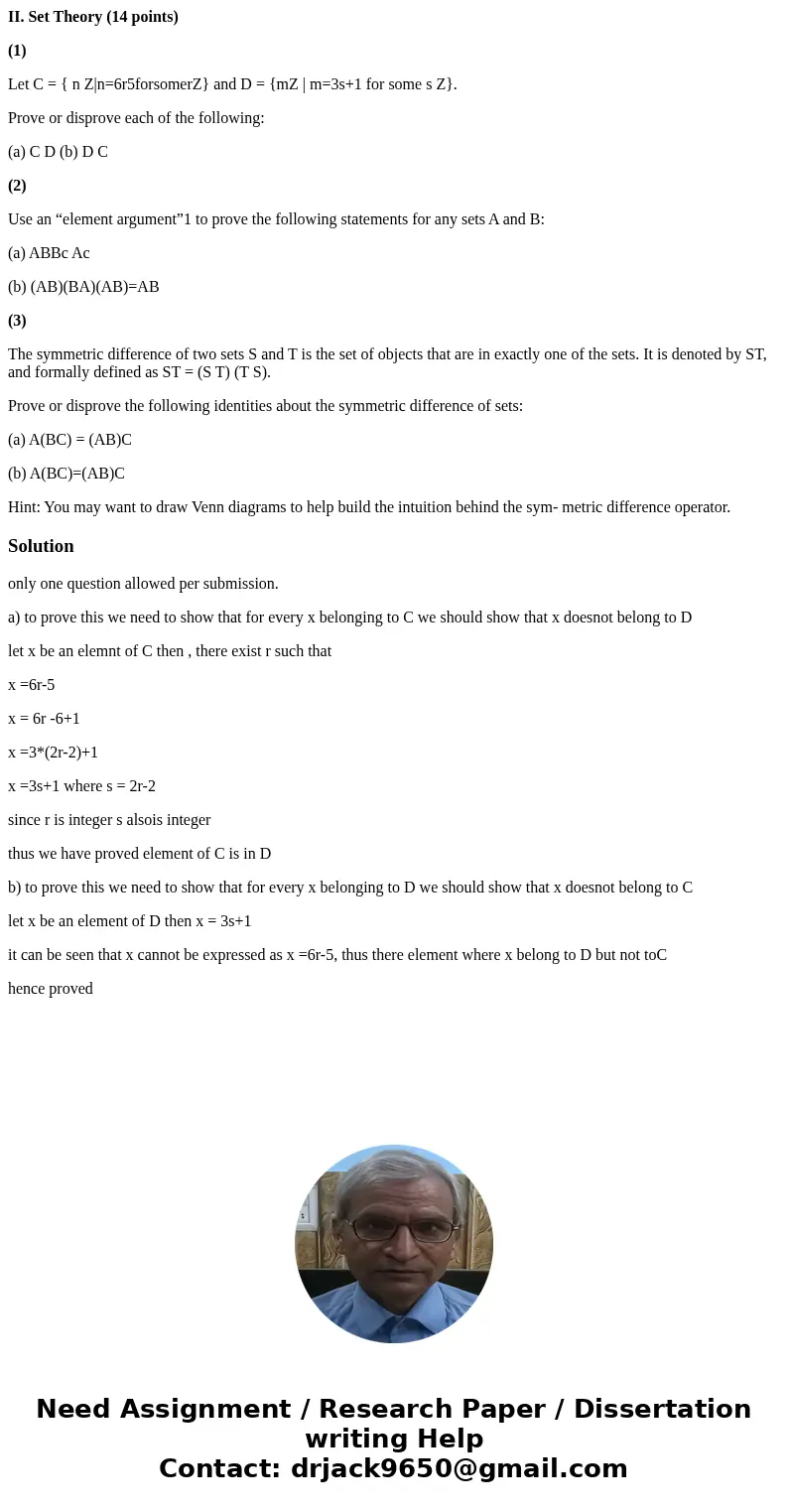II Set Theory 14 points 1 Let C n Zn6r5forsomerZ and D mZ
II. Set Theory (14 points)
(1)
Let C = { n Z|n=6r5forsomerZ} and D = {mZ | m=3s+1 for some s Z}.
Prove or disprove each of the following:
(a) C D (b) D C
(2)
Use an “element argument”1 to prove the following statements for any sets A and B:
(a) ABBc Ac
(b) (AB)(BA)(AB)=AB
(3)
The symmetric difference of two sets S and T is the set of objects that are in exactly one of the sets. It is denoted by ST, and formally defined as ST = (S T) (T S).
Prove or disprove the following identities about the symmetric difference of sets:
(a) A(BC) = (AB)C
(b) A(BC)=(AB)C
Hint: You may want to draw Venn diagrams to help build the intuition behind the sym- metric difference operator.
Solution
only one question allowed per submission.
a) to prove this we need to show that for every x belonging to C we should show that x doesnot belong to D
let x be an elemnt of C then , there exist r such that
x =6r-5
x = 6r -6+1
x =3*(2r-2)+1
x =3s+1 where s = 2r-2
since r is integer s alsois integer
thus we have proved element of C is in D
b) to prove this we need to show that for every x belonging to D we should show that x doesnot belong to C
let x be an element of D then x = 3s+1
it can be seen that x cannot be expressed as x =6r-5, thus there element where x belong to D but not toC
hence proved

 Homework Sourse
Homework Sourse